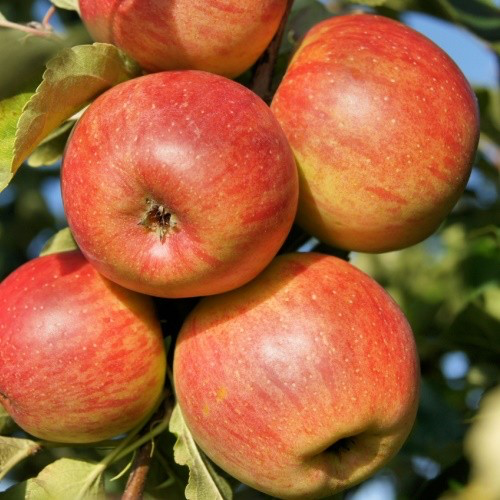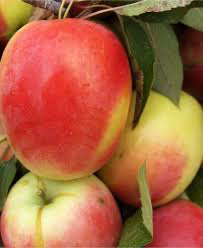This is the closing of a series on mitigating climate change through local action. The Earth is very responsive. We can trust that. This estuary on Vernon Creek, for example, with its sandbars and gulls, was created out of open water by scraping snow and salt and sand off the streets of Vernon and dumping them on a filled-in wetland just upstream, next to the Vernon Municipal Airport, which is more filled-in wetland. This is where the creek puts the sand. Pretty soon, the Okanagan Indian Band will have a nice couple acres of new land.
The gulls already do.
In the last couple of posts, I talked about the industrial, environmental and social costs of growing fruit in the Okanagan Valley. You can follow that discussion in this post: The True Costs of Farming in the Okanagan. I then added the racial background to the story in Race and Orcharding in British Columbia and Washington. In the third post in the series, Healing Climate Change in the Okanagan Valley, I presented some actions for positive action. In this post, we will look into the orchards that have replaced the grasslands. First, though, the porcupine. He has been hungry.
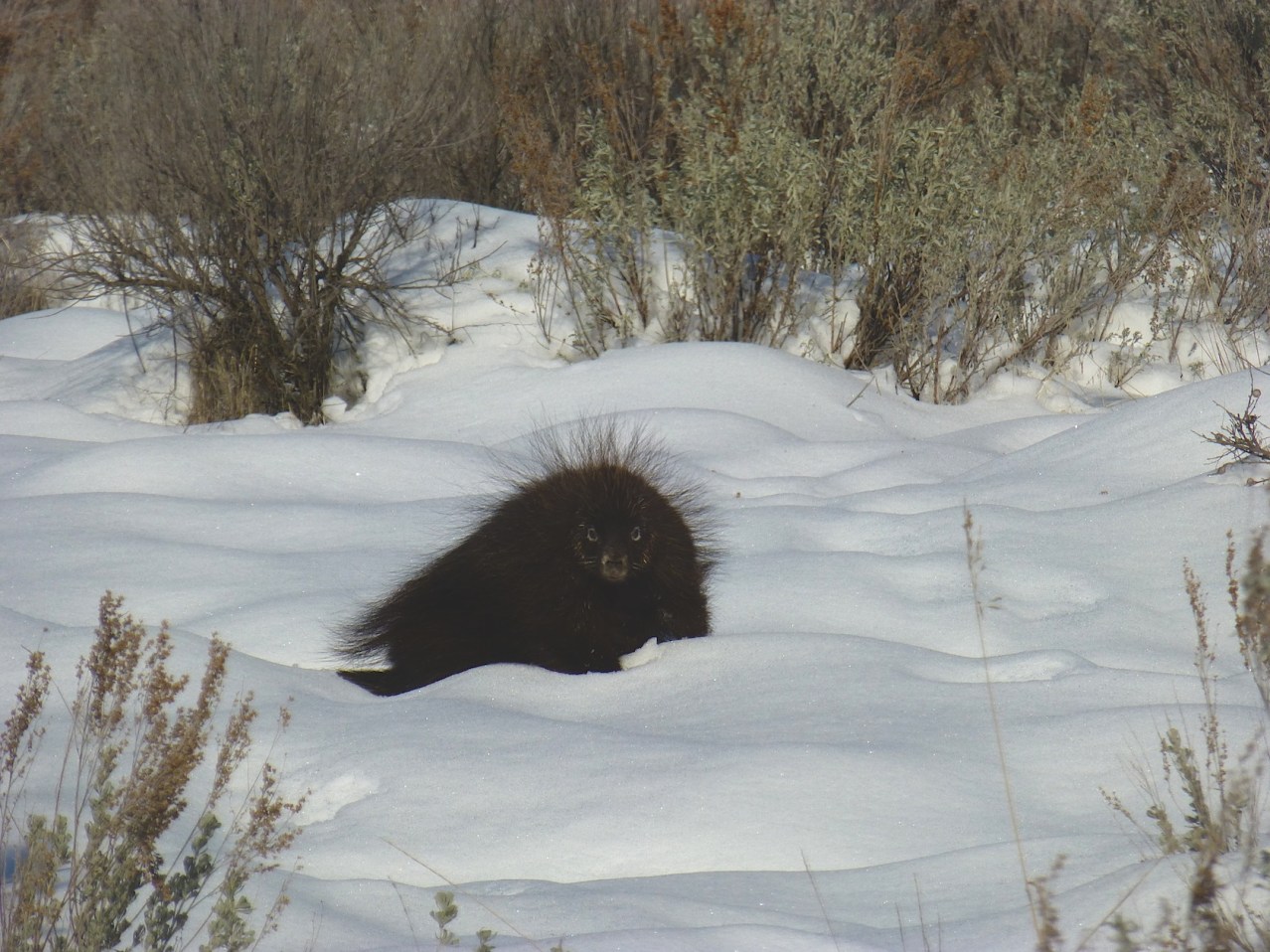
He likes choke cherries, but they’re not so much fun when his dry streamed trail has been turned into a wet watercourse by the City of Vernon (thinking that’s what dry watercourses are for) and his home shrubberies are now a building site.
 A porcupine still has to eat. This is a happy story. Look below. Here’s a tree we all love to hate, the Chinese Elm. She’s a beautiful, weedy thing that doesn’t belong in this grassland and spreads like crazy, because she sure likes it here. But, you know, after growing here for, I dunno, eight or ten years, I guess, she kept a porcupine awfully busy for a cold winter night. Nice. Given that there are no other trees in sight, I’d say that she fits in around here just fine. Anything does, that keeps the web of this world alive.
A porcupine still has to eat. This is a happy story. Look below. Here’s a tree we all love to hate, the Chinese Elm. She’s a beautiful, weedy thing that doesn’t belong in this grassland and spreads like crazy, because she sure likes it here. But, you know, after growing here for, I dunno, eight or ten years, I guess, she kept a porcupine awfully busy for a cold winter night. Nice. Given that there are no other trees in sight, I’d say that she fits in around here just fine. Anything does, that keeps the web of this world alive.
Chinese Elm at Dawn
If we were really farming this land, we’d be planting more trees like this: not for humans but for the land. For the porcupine. For us.
So, it’s not really about whether something belongs here or not, but whether it can weave itself into the web of this world and help to keep all parts of it alive. A dead elm (and this baby is going to die this year) is a great thing for flickers, magpies and, especially, hawks. That’s a lot of use for a tree otherwise called invasive. But the orchards, eh. Today, I saw a fine herd of deer browsing on these trees, inside the fence. In other words, the fence, that is meant to keep them out (or so we’re told), doesn’t, and all these little trees are vulnerable. Currently, the answer is legislation that allows farmers to shoot deer on their land, even out of season, which is, I think, much like shining a bright light into a lake at night and catching the fish that come, which is illegal.
So, let’s just take a deep breath and ask these farmers to do us all a favour and
Plant Taller Trees. If that takes more labour, hire more labour. If there is no labour, pay more to get it. Remember, grocery store apples …
… are bringing farmers an average of a third of the retail price. In other words, the selling system that is bringing us low-quality apples like this is raising our food costs by 300%. There’s room in there to pay labour better and to sell things differently.
Don’t be Fooled by Efficiencies. Currently, most of the apples eaten in Canada and the United States are produced in Washington. 138,000,000 40-pound boxes of apples. (The Okanagan produces 4,400,000). They are picked in bulk, trucked to large controlled atmosphere storages, packed on demand, and shipped by truck and rail across the continent. The price of the packaging alone is about 10 cents a pound. By the time that price gets funnelled through wholesalers and retailers, it’s probably about 20 cents of what you pay per pound. That’s pretty close to 15% of the cost of those Red Delicious up there, for something that just gets recycled. At any rate, you’re not paying for food. At most, the farmer got about 30 cents for those $1.32 apples, with deductions from that for the ones that graded out more poorly. The extra dollar is an industrial subsidy. We are constantly told that we need this system, as to make apples pay they have to be grown in large volumes, which are all harvested at once. Controlled atmosphere storage allows them to be marketed for a year. This keeps the price high by managing demand. If this system didn’t exist, those apples would sell for something closer to that 30 cents, but only for a couple months. Then they’d be gone. But, as I said, don’t be fooled by efficiencies, because:
Apples grow anywhere in the Temperate Zone of the Earth. The trucking and shipping is not really necessary. In the Okanagan Valley, this means that we don’t have to grow our apples in the hot lowland along the lake, or in the hot bench lands of the Similkameen, where water evaporates in the dry air. We could grow them up in the hills, saving 35% of our water just like that. Of course, they wouldn’t be Red Delicious, Honey Crisp, Cripps Pink, Granny Smith or Fuji, but, hey, that’s OK. Those are apples that are chosen because they are easy to handle on automated industrial packing lines, anyway.
Don’t get hung up on varieties. There are 1000s of varieties, and the potential for 100,000’s of thousands more. Even in the Okanagan, a rather northern fruit-growing region, all-in-all, it is possible to have fresh apples, without cold storage, from about July 15 …
Stark’s Earliest Apple
… through to November 5. After that, winter keeping apples (without cold storage) will ripen up in about 6 weeks, right about when the fall apples are done. Six weeks puts us around Christmas. Some of these apples, like the beautiful Swiss Maigold …
Maigold Apple
…keep through until May. So does the Russian Kandil Sinap:
Not to mention the old Virginian herself, the glorious, beet-root-tasting Winesap:
Forget the Electrical Storage and all those Costs. You wouldn’t need it. You could have a new apple every week instead. Apple buying would come with the excitement currently reserved for wine tasting and all the tourism that goes with that. Instead of paying an industrial subsidy for our apples, we would be freeing up our water for other uses than hydro generation and evaporation-zone irrigation. We would be freeing up land for other more productive uses. Like, say, that elm tree. And porcupines.

Porcupine on the Move Down to the Orchards for Some Winter Apples. Really.
And that takes me to the riparian zones, which link the high, sagebrush hills with the wetlands below. Or what has replaced the wetlands.
You know, where the deer want to be.
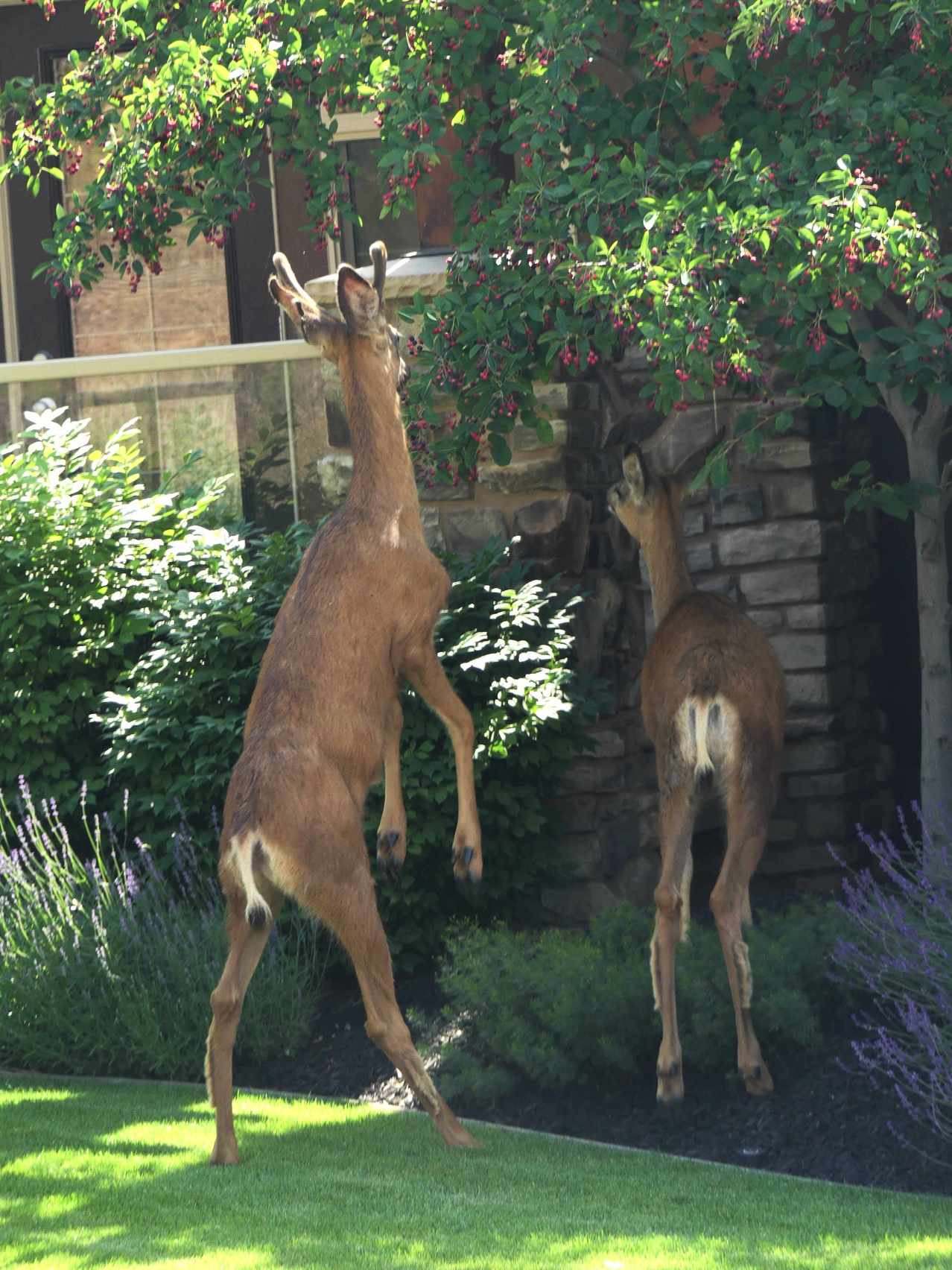
Read All About it in A Picnic in the Saskatoons
Human landscaping, which has reserved all the water, is the new riparian zone. Of course, deer are going to go there. The older riparian zones go up and down the hills. Sometimes they look like this:
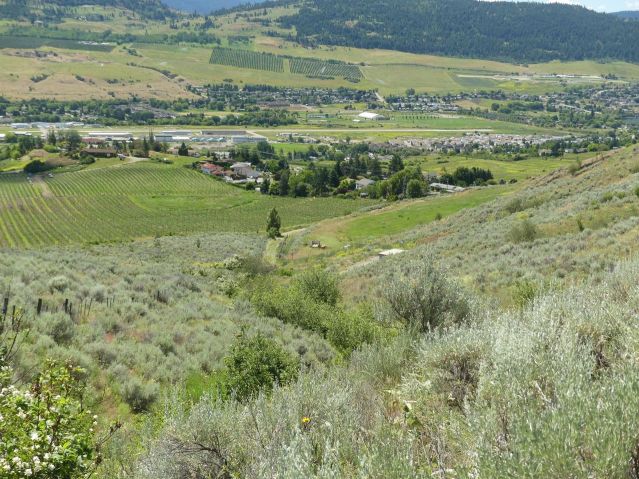
That’s the orchard below, that I showed you in the snow. You can see the new wetland (housing) in the centre right. I unpack the whole image for you in my post Is It a Healthy Environment? Why Words Matter to the World. Note that passage from this ribbon of life down to the valley floor, is broken. That’s important, because in valleys like this there is a month-long gap difference between the ripening of crops in the valley bottom and at the top of the riparian corridors. Think of that: no cold storage needed, because the land stores it and releases it a little at a time. Next to wetlands scattered through the grass, these riparian zones are the life of the grasslands. It is here that most birds and animals live. It is here that most traffic takes place. Many might feed in the grass, but they come back here. Some just stay and wait.

And that brings me back to the porcupine.

Porcupines go up and down the riparian zones on little porcupine highways.

They eat apples. They poop the apples out. The apples grow, right where there is just enough water, and just enough rose bushes to keep them safe from deer.

You can read all about it in my post: Porcupine the Gardener.
Bears do the same, but they add wild plums, domestic plums, and apricots to the mix. Crows add nuts. Robins spread berries everywhere.
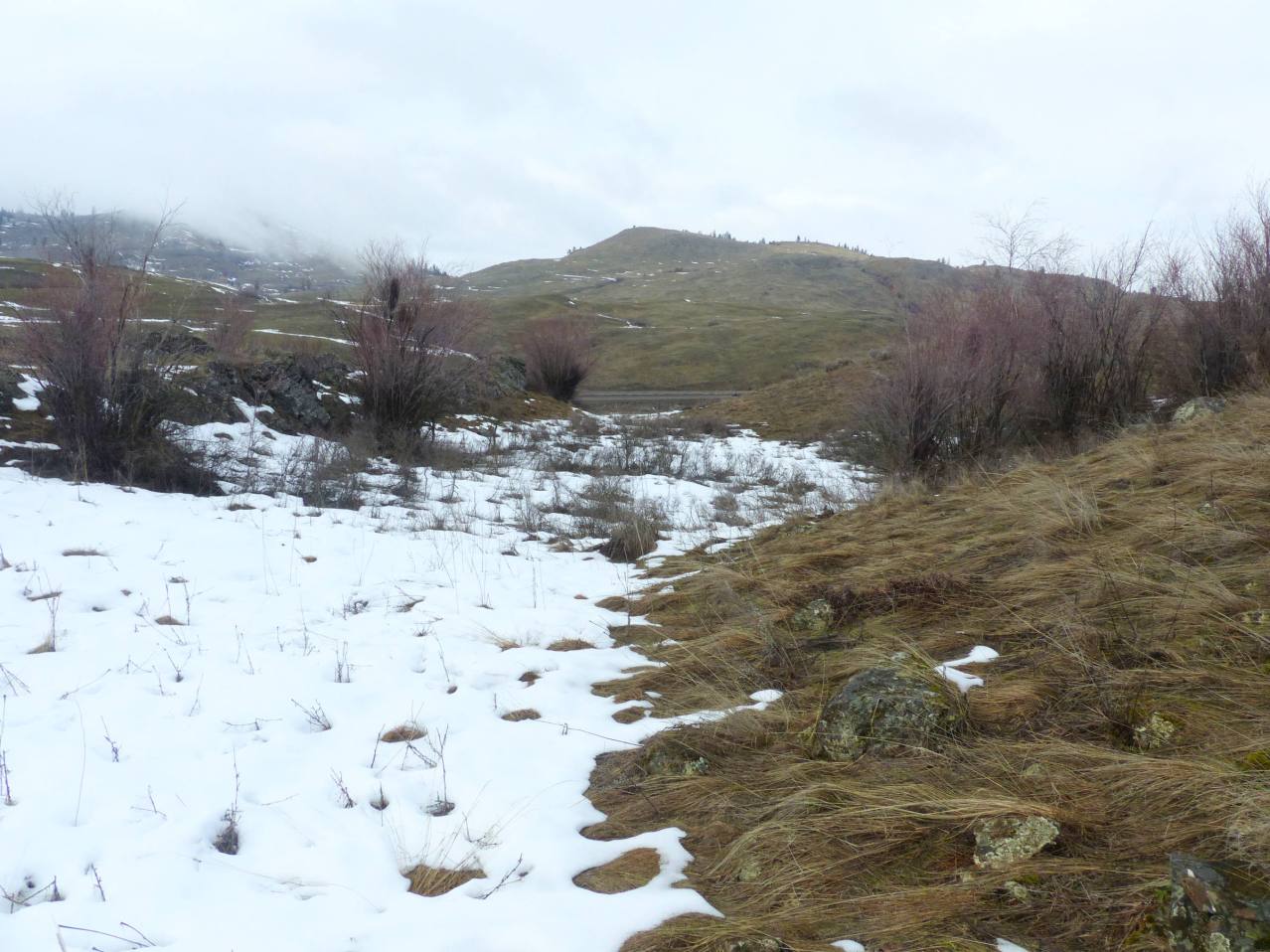
Siya bushes, spread by robins.
They’re up to a lot more than that, though, as I point out in my post Robin Did It.
And so the porcupine continues the old work of joining the wet and the dry and the low and the high, deepening the life of the riparian zone, and making it a better home for so many other species, including us. Those apples are for us. Note that they are free of disease. There are no coddling moths in those babies. What’s more, it’s a breeding program. Bears and porcupines have a sweet tooth, and only take the very nicest fruits. Apples were originally selected by bears in the apple forests of Khazakstan. Horses helped. The porcupines and bears can still do this work for us, as I point out in my post Apple Hunting with Bears. (This is the experience that led to the slow apple pie I mentioned the other day.)

The best apple pie in the world comes from these bear-selected Fintry apples. So, just in case you think, ah, this is so nice and pretty but we have work to do, just remember that hundreds of millions of dollars are at stake. That’s what the Ambrosia apple has made, a wild seedling dropped by chance that I ate when it was a scrubby little weed back in 1991.

All in all, by recognizing that our farms are wetlands and riparian areas, and reducing our footprint by eliminating the industrial and environmental subsidies we place on them, and by working together with the animals that need to pass up and down the valley, we will be creating the conditions for survival, sustainability, and a life joyfully lived among a rich variety of creatures, who are working along with us. That’s how the Earth works. What’s more, this is easy stuff. It requires a bit of education, some changes to planning rules, and some changes to fruit farming techniques. A change in varieties and marketing methods, coupled with a change in fruit-growing locations, would free up the environmental efficiencies that would make all this happen.
This is a syilx principle, this weaving together to create mutual support. We can reconcile our selves across cultures when we allow the land to lead us.
Oh, and remember:
saving the water and how it flows through the land changes the climate. Let’s look at that in detail next week.
Categories: Agriculture, Ethics, First Peoples, Grasslands, Land, Nature Photography, Water


















